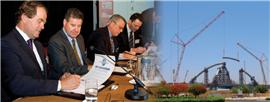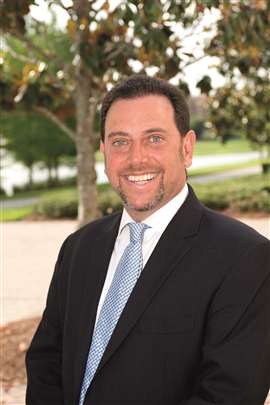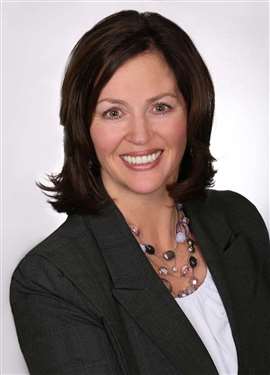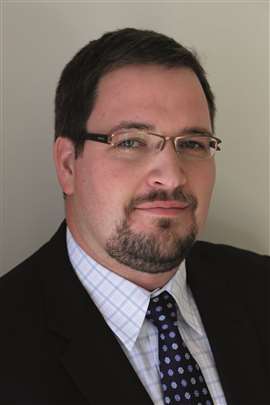What is the International Crane Stakeholders Assembly?
10 July 2023
Founded in 2012, the International Crane Stakeholders Assembly (ICSA) is a meeting of international associations representing the crane and rigging industry and crane manufacturers with the mission to facilitate information sharing and meaningful dialogue between crane industry stakeholders on safety, technical and regulatory issues of concern to the international crane industry.

Formed in response to the European promulgation of EN-13000:2010, ICSA affords a global platform through which global differences can be aired and discussed on a regular basis, and whose goal it is to promote a more harmonized industry.
The Assembly is currently comprised of seven partner organizations – the Association of Equipment Manufacturers (AEM), the Crane Industry Council of Australia (CICA), the Canadian Crane Rental Association (CCRA), the European Association of Abnormal Road Transport and Mobile Cranes (ESTA), the European Federation of Material Handling (FEM), the Japan Crane Association (JCA) and SC&RA.
Since 2012, ICSA has published six official guidance documents, including:
1. Leaving Mobile Cranes Unattended in [Partially] Erected Mode
2. Lifting a Load with Several Mobile Cranes [Multiple Crane or Tandem Lifting]
3. Lifting of Persons with Mobile Cranes
4. Mobile Crane Ground Preparation for Wind Farm Construction
5. Working with Land-Based Mobile Cranes on Floating Vessels
6. Using Mobile Cranes with Freely Suspended Equipment for Pile Driving/Extraction
The group convenes at least once a year in-person around a larger event like Bauma or ConExpo, plus additional remote meetings to further work on guidance papers.
 Rob Weiss, President of Cranes1 Consultants, LLC
Rob Weiss, President of Cranes1 Consultants, LLC
In 2008, Rob Weiss, then CEO of Cranes, Inc., played a pivotal role in the Assembly’s formation when he brought the EN-13000 issue to the attention of those in attendance at an SC&RA January Board Meeting in Hawaii.
“I remember the moment so clearly – it was near the end of the Crane & Rigging Group Governing Committee, and the chairman had just opened up the floor for new business,” he said. “I raised my hand and asked if anyone had heard about the new EN-13000 rule that called for the removal of the traditional override key from the crane cab. There was nothing but stunned silence in the room.”
Weiss (currently President at Cranes1 Consultants, LLC) then explained that he’d just returned from the Liebherr factory in Ehingen, Germany, where their chief engineer had briefed him on the upcoming changes to European-built cranes.
“It turns out that, even though the room was filled with representatives from major crane manufacturers – some of them from the parent companies of European manufacturers – nobody was aware of this massive impending change,” he added. “Out of the ensuing discussions, the SC&RA EN-13000 task force was created.”
The primary mission, according to Weiss, was to open up dialogue with European crane manufacturers and users alike so that the industry as a whole could operate in a more harmonized fashion. “Initial meetings at ConExpo 2008, and later at Liebherr’s Ehingen facility, opened everyone’s eyes to the value of worldwide communication and collaboration, and in the coming years, ICSA was born,” he confirmed. “The original founding members were SC&RA, AEM, CICA, ESTA and FEM.”
Common threads
 Beth O’Quinn, SC&RA Senior Vice President, Crane & Rigging
Beth O’Quinn, SC&RA Senior Vice President, Crane & Rigging
“From the beginning, ICSA’s purpose was, and is, to share ideas and facilitate guidance documents that offer best practices around the world,” indicated Beth O’Quinn, SC&RA Senior Vice President, Crane & Rigging. “Each guidance document requires unanimous approval from all partner organizations or it is not published.”
She added, “ICSA members share ideas, challenges and solutions on issues encountered by industry – which is both interesting and helpful, to see how common threads move through each organization.”
O’Quinn also pointed out that much of ICSA’s discussions surround regulations and standards, and how they might impact individual countries as well as the global state. “Each meeting covers a broad range of topics that also includes engine emissions, outrigger positions, EPA issues, risk-management and workforce development.”
In their most recent meeting at ConExpo 2023, ICSA members discussed additional guidance documents concerning training of personnel and lift planning. “We also discussed heavy vehicle access management systems, as well as right to repair and cybersecurity,” acknowledged O’Quinn.
Crowning paper
 Ton Klijn, ESTA Director
Ton Klijn, ESTA Director
“In addition to the guidance documents, it’s been inspiring to see ICSA members take such an active role in helping ESTA create the European Crane Operators License concept,” continued Weiss. “Insights from CCO [National Commission for the Certification of Crane Operators], one of SC&RA’s representatives to ICSA, as well as CICA, have been invaluable to ESTA’s director, Ton Klijn, as he’s fought to improve crane safety across the European continent.”
Klijn agreed, “Much of the time, the areas we address are within the gap between what the manual says from the manufacturer and what the legislation says to the user,” he acknowledged. “So we try to come to a consensus for that middle bit, because safety is universal. As a result of this approach, ICSA has grown, with the recent additions of Canada and Japan.”
Klijn points to CCRA, and believes that Canada is starting to make moves towards harmonization and pursue better regulations on crane use based on what they’ve learned from other countries via ICSA. Claire Belanger-Parker, CCRA Executive Director, echoed the sentiment.
 Trevor Eckert, Claire Belanger-Parker and Paul Walchuck of the Canadian Crane Rental Association.
Trevor Eckert, Claire Belanger-Parker and Paul Walchuck of the Canadian Crane Rental Association.
“The first thing that I saw upon joining the Assembly was the level of expertise and knowledge in a safe space to discuss industry challenges,” she said. “The subject matter experts who participate in these meetings can help us move industry issues so much faster than going it alone. And the quality of the guidance documents produced by the collective can be used worldwide. Consequently, we wanted to be a part of the collective success and share these best practices with the rest of our membership.”
 Brandon Hitch, Chief Executive Officer at CICA
Brandon Hitch, Chief Executive Officer at CICA
Brandon Hitch, Chief Executive Officer at CICA, has seen first-hand the power of that collective success. “As for a direct benefit in Australia, in 2016, ICSA published a document on how to safely use a workbox with a mobile crane – a collaborative with manufacturers as well as users around the world,” he explained. “Once that paper was published, we pushed it out to our members in Australia, and a member adopted this policy, and they ended up reviewing a twelve-year regulatory position using the evidence of this paper, along with a couple of other details.”
But the real catalyst, said Hitch, was the ICSA guidance document. “CICA can have views but the formality of those views change once they are agreed to or endorsed through the member participants in an ICSA paper versus a CICA paper. Of the six documents ICSA has published, that one is the crowning paper from our standpoint because it changed the course of a twelve-year debate in Victoria, Australia.”
Hitch is equally inspired for ICSA’s future. “Each organization has a season where we’re at our strength … and this network allows us to lean on the collective when we need it,” he emphasized. “You can feel that you are alone in this industry a lot of the time – so when you get together with this group, you realize that we all share many of the same challenges, and we can all help each other through them.”
STAY CONNECTED


Receive the information you need when you need it through our world-leading magazines, newsletters and daily briefings.



